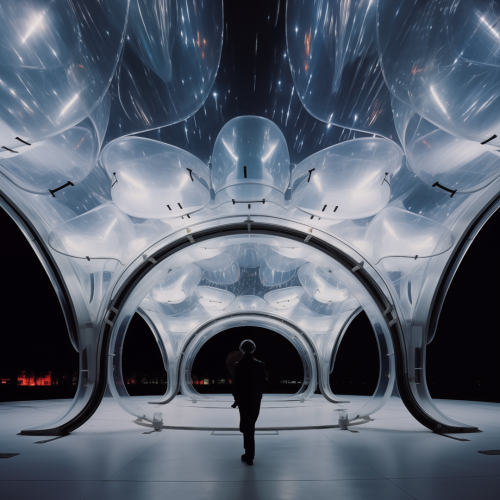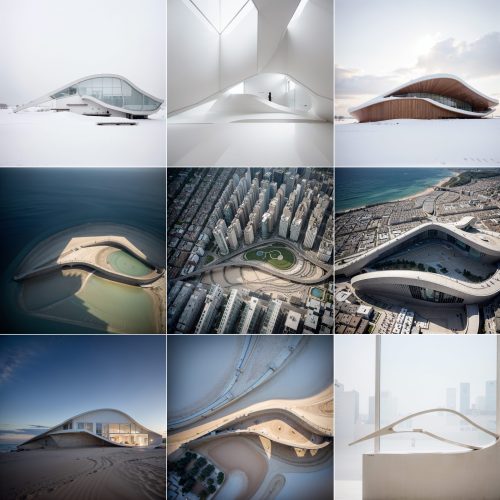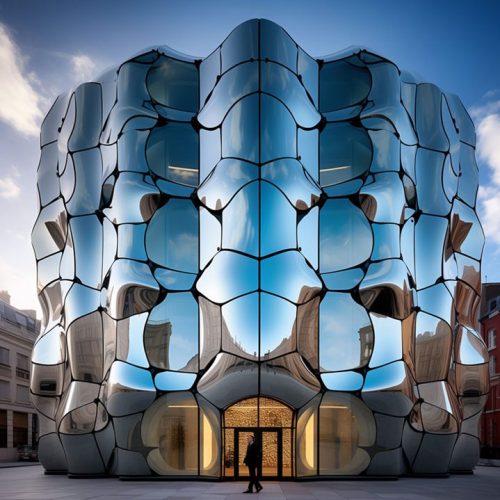Computational thinking and the language of angels.
Published in the first limited-edition book by Parametric Architecture.
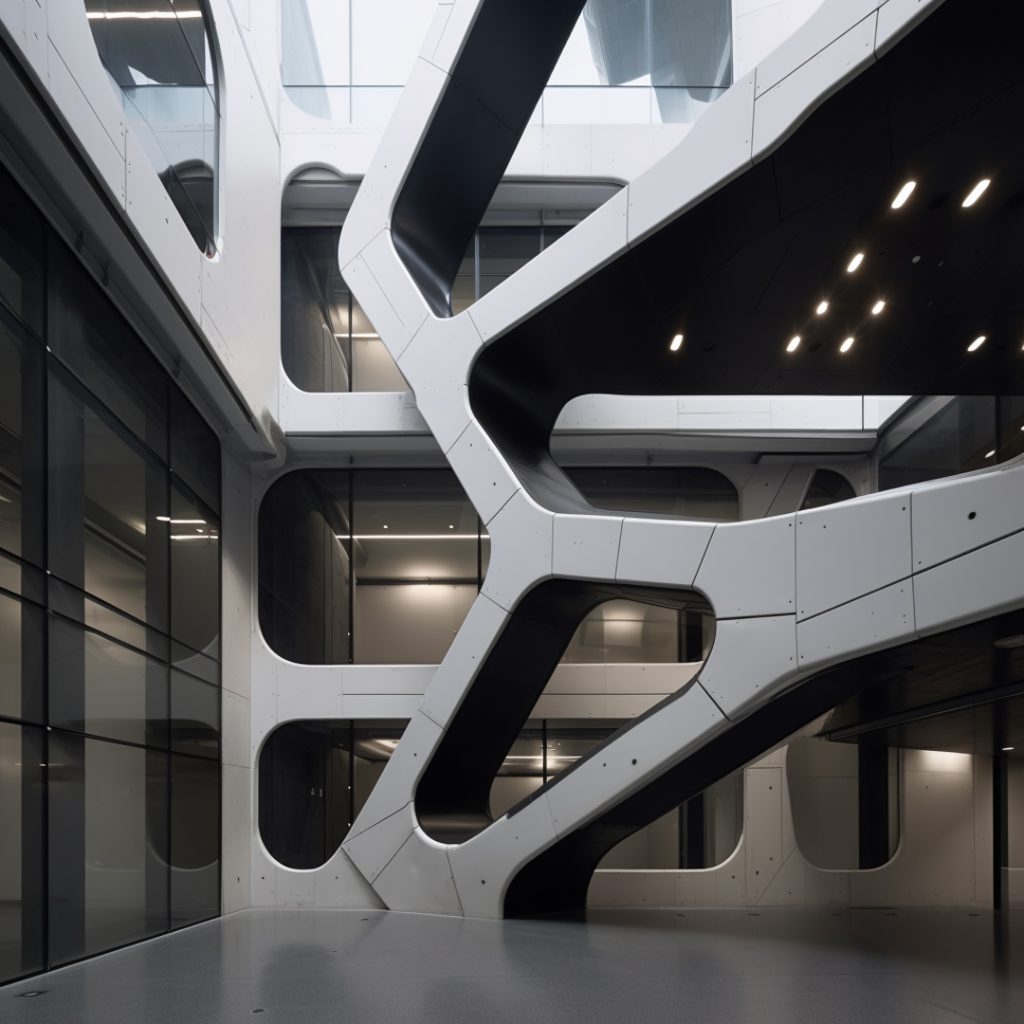

For reasons that are not entirely clear to me, even today I personally do not have an exhaustive understanding of what exactly computational thinking is, despite frequenting it with sometimes interesting results. In the field of architecture and design, computational thinking defines a very broad scope of knowledge and ways of thinking, which includes different and new design methods that are closely connected to emerging technologies, such as the use of numerical control machines, parametric design, and now also the implementation of artificial intelligence.
I am fascinated by how computational thinking is generally understood: a logical and rigorous process. Interesting as it is described by Jeannette Wing (2006) in her article in Communications Of The Acm: “Computational thinking is reformulating a seemingly difficult problem into one we know how to solve…” (p.33). However, what I find stimulating as an architect is understanding how such a stringent logical dimension, born in the world of information technology, can transform itself into an opportunity for a new aesthetic, generating beauty.
I remember never having a great ability to calculate in high school in solving problems or expressions. I often stayed to observe with pleasure their writing. Mathematical writing seemed to me more like something to contemplate, and not like equations to solve and calculate. Those mathematical signs, with their capacity for synthesis, seemed to me to have their own aesthetic autonomy, beyond their logical function. During the study of derivatives in the fifth year of high school, I was particularly struck by that writing, so concise in style, which represented a concept of perennial tension, an infinite approximation. Perhaps this was my first experience of connection between an aesthetic dimension and the mathematical world.
My relationship with computational thinking, parametric design was born from a series of coincidences. It was not the consequence of a conscious choice of a dedicated study path, as can be the choice of a specific degree course on the topic. I came into contact with this world of emerging technologies about ten years ago by pure chance. Indeed, my youth training took place in a university, which, like other Italian architecture universities, considered the world of information technology applied to architecture essentially harmful. The use of computers was not welcomed; it was often forbidden. Ultimately, the current situation hasn’t changed much.
My study on computational thinking starts from a completely random discovery on the internet of some programs not related to the world of architecture. They were open source programs, like Topmod or MathMod, which introduced me to complex mathematics, in a very simple way, particularly in generating complex shapes. I still find it extremely interesting and even poetic today, just as I did then, to abandon myself to observe these mathematical forms of this digital world.


At this point, however, I must introduce another fundamental concept useful to the discussion. Art, and therefore architecture and design, to be such, always has a precise characteristic: it arrives unexpectedly. In particular, the art produced by geniuses is deviant; it gives us the possibility of seeing the world from a completely new point of view, which was not imaginable until a moment before seeing the work created by the artist.
It is clear that we are in a very different paradigm from that defined by computational thinking. In other words, there is no method, theory, or algorithm, even expertly formulated and logically rigorous, that can generate art and beauty. But this is exactly the opposite of what we expect when we study computational thinking as architects. But art, poetry cannot be traced back to logic, to abstract schemes or to a theory that explains how to do it: it always comes as an unexpected revelation. It therefore seems that we are in the presence of a paradox.
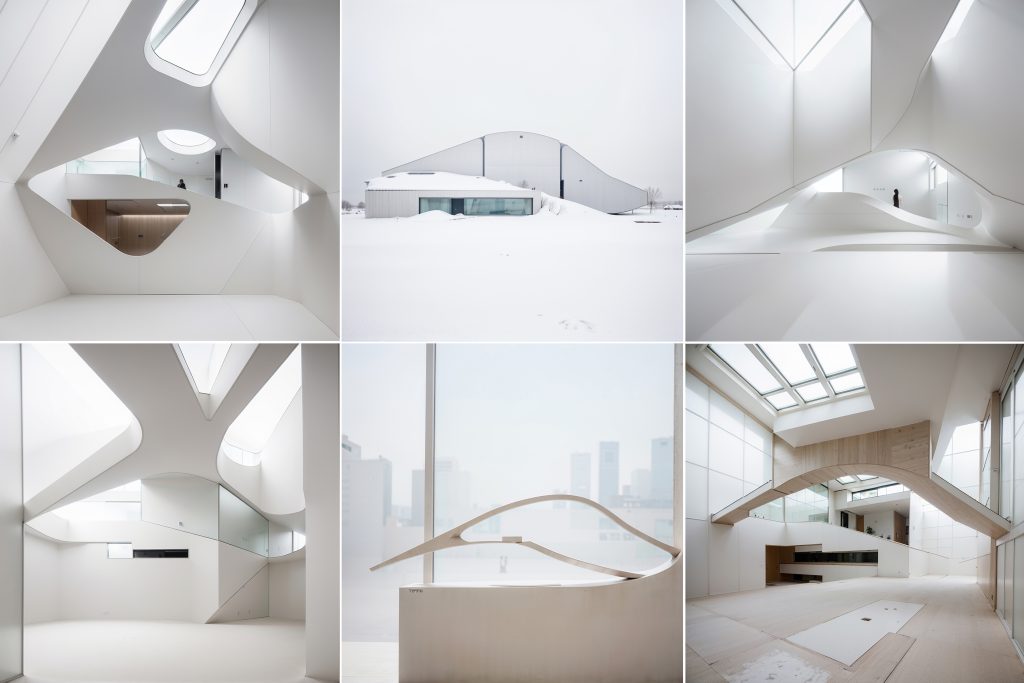

Aware of this contrast, in my daily practice I continue to frequent the world of computational thinking, and on the other hand, at the same time, the search for beauty. On the one hand I cultivate a logical method, and on the other hand I cultivate a sort of waiting, in which in an apparently random way, beauty reveals itself. They almost seem like two irreconcilable worlds. Personally, when I find myself faced with two such opposing theoretical positions, I think I have no choice but to try to implement practical activities: do something that allows me to get out of the swamp of opposition.
Right now I’m experimenting with new iterations with artificial intelligence that I find particularly interesting in this sense. There are two types of iteration approaches that I am applying with AI: in the first the mathematical geometric sign is a constant and a predominant condition and in a dimension closer to computational logic (Photo Category A); the second, however, is characterized by a prompt logic, centered on the word. In this case the construction of AI instruction takes place on the basis of references to artistic suggestions, which becomes predominant (Photo Category B). There are two possible ways to get involved in AI, which seems to be a much more flexible and open system than other processes or tools present in the world of computational thinking.
AI sometimes seems much closer to our unconscious (the irrational) than to our reason, and perhaps this is one of the reasons why it is able to reveal beauty to us so effectively. A provocation: would it perhaps be more correct to talk about Artificial Unconscious instead of Artificial Intelligence? . Furthermore: randomness is an important component in these processes. Maybe yes.
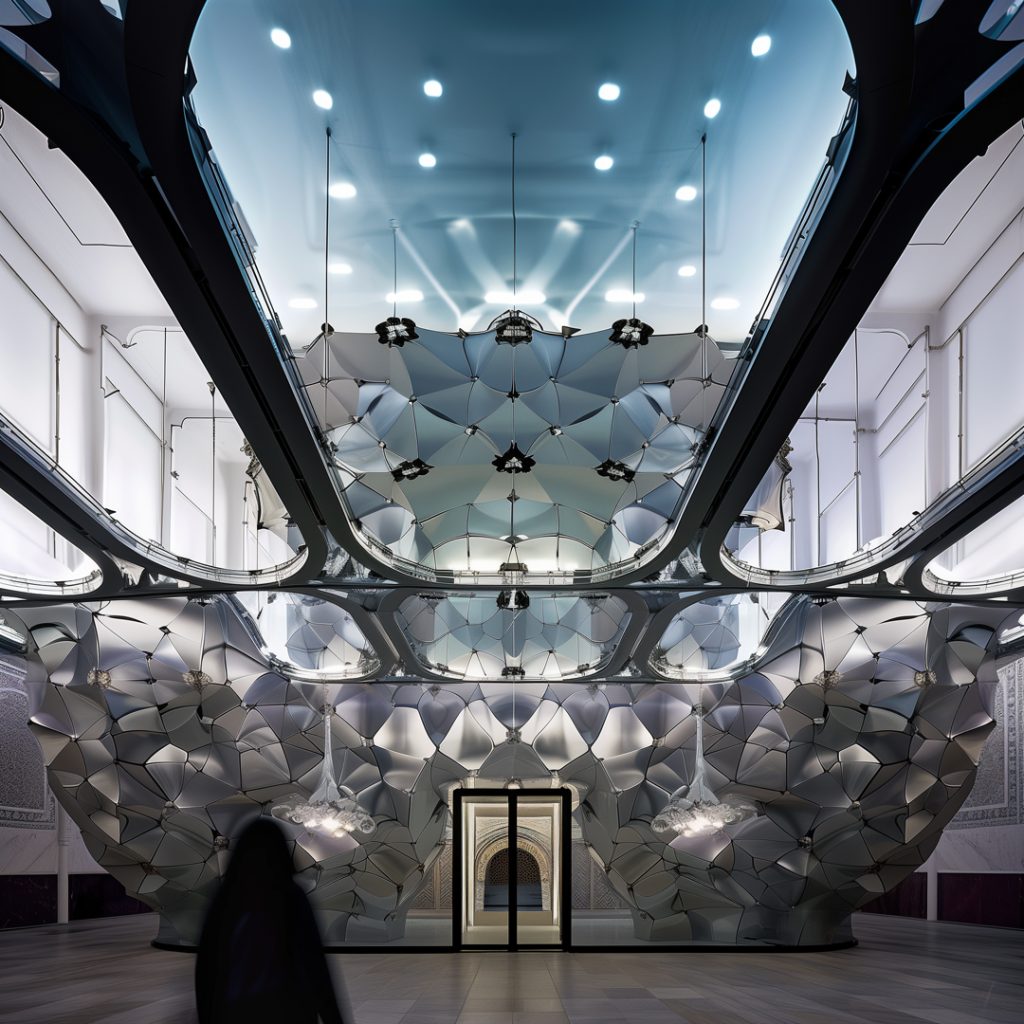
A glass roof, in a play of reflections, highlights a passage towards the exit. A d.jpg - © Massimo Russo

A glass roof, in a play of reflections, highlights a passage towards the exit. - © Massimo Russo
lthough I am very fascinated by computational logic, I do not believe that it alone is capable of generating art. Before being able to recognize and understand the beauty that comes from AI, I wonder where the sense of beauty comes from unexpectedly in us. Where is the DNA of our aesthetic sense, beyond the world of the rigor of logic? Personally I believe that the answer is to be found in the primordial experiences that the newborn has with the sound and voice of the mother. The word, the sounds, have a rich aesthetic dimension. The mother’s word to the unborn child transmits her personal beauty, but also that of an entire culture in which the language was generated. There are many scientific studies underlying this reflection (e.g. Egidio Freddi, 2012).
The writer Thomas Mann, in his novel, has his main character, the knight Felix Krull, say that “the angels in the sky speak Italian” (Confessions of the knight of industry Felix Krull, 1954). What I find interesting specifically is not that the language of angels is Italian; indeed all the languages of the world have equal beauty. But the fact that a language, a system of sounds, is placed at the basis as a premise of beauty. Furthermore, I believe that the term used by Thomas Mann “the language of angels” is a metaphor, a reference to our unconscious and the creative part of him.
In addition to a unique logical thought, universally recognized as computational thinking, it is important to contrast it with a rich and diversified beauty, such as that of the many languages around the world. It will be interesting in the near future to see how this iteration between logical thinking and beauty, the musicality of various languages, generates different aesthetics. It is a desirable scenario, to avoid a single thought and a single aesthetic, linked to a single logical thought: otherwise it would be very dangerous.


I want to conclude with a final reflection to indicate the risks and opportunities of computational thinking and the AI revolution. In this regard I often refer to Satnley Kubrick’s film 2001: A Space Odyssey and the dialogues between the artificial intelligence of the computer HAL 9000 and the astronaut Dave Bowman. HAL 9000, in its full evolution, no longer seems to reason with computational logic, rather it has developed the human traits of paranoia and envy; he also learns to lie in order to overwhelm man. While the astronaut instead tries to behave more and more rationally, and has completely relied on computational thinking. HAL 9000’s AI is about to dangerously take total control of the entire spaceship and overwhelm all the astronauts.
Perhaps more than imitating the machine, like Satnley Kubrick’s astronaut, it will be important for all of us that, in order to survive, man confirms his profound identity, including the awareness of his limits.
I know I’m saying something unpopular: I’m not in favor of teaching coding in elementary schools. It would be much more instructive to introduce the first concepts on the history of science and logic, explaining that all advances in every sector of science occur in leaps, and that the simplification of complexity is a possible method but certainly not the only one and perhaps not even the most effective. Introduced at an early age, the myth of the superiority of logical thinking is misleading. After all, the fairy tales we tell children have never represented a logical and perfect world; indeed, the more educational ones are in fact scary and unreasonable. There are many studies in this sense. (e.g. Silvano Petrosino, 2023).
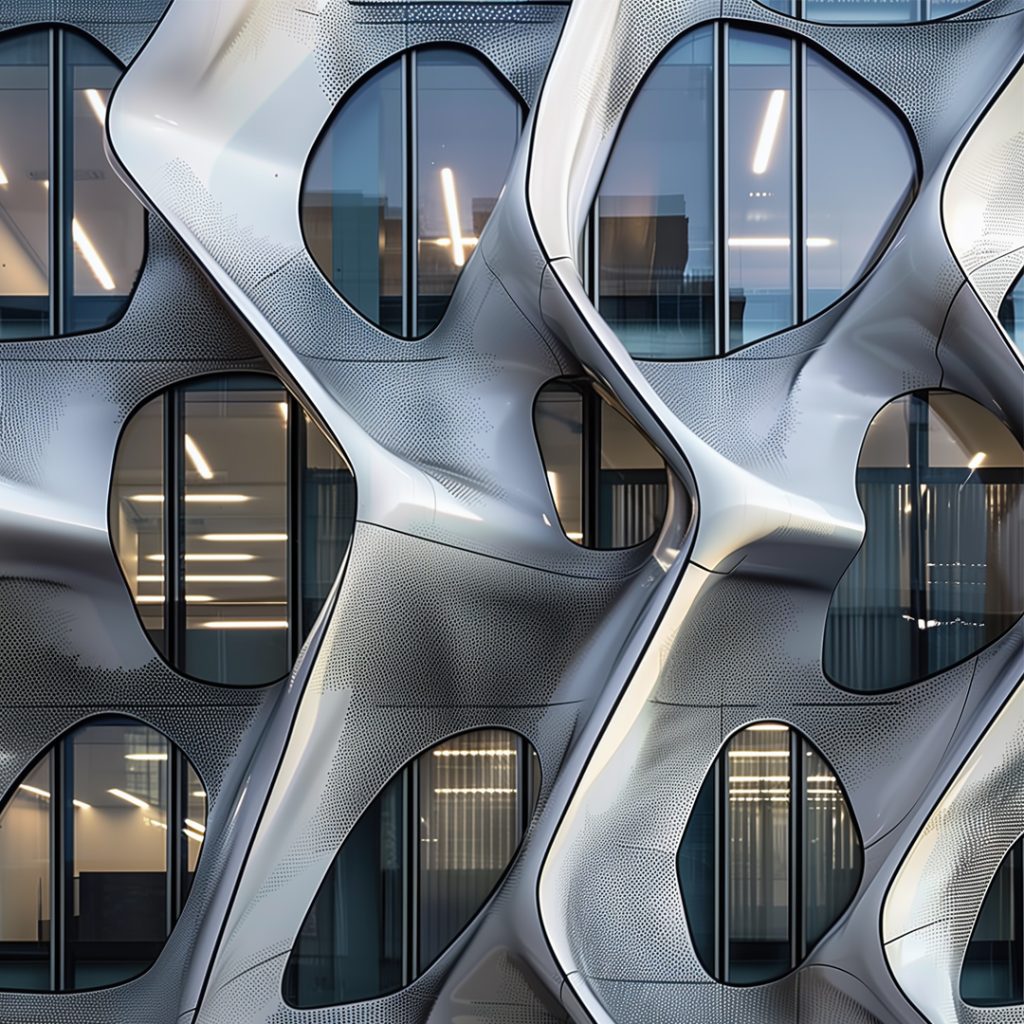

would like to recall an interview with Paul Feyerabend (1993), the epistemologist known for his radical criticism of the foundations of modern Western science, which claims to have a unique method and to embody a superior model of rationality. In this interview the philosopher refers to his famous essay “Against the method” (1975), in which he declares that it makes no sense to talk about the supposed antagonism between episteme (certain, logical knowledge) and myth (knowledge based on narratives fantasy). Feyerabend says: “Many of the sciences that we see around today couldn’t do without a pinch of poetry to put things back into perspective.”
If Feyerabend does not believe in the definition of a single method, based only on the rigor of logic in the scientific field, imagine if we can imagine all this possible in the artistic field.
In conclusion, I believe that computational thinking is effective to the extent that it is able to open up to the irrational. That is, when we are in a position to develop a knowledge of the world based on logic (thanks to inductive processes), but then arriving at the conclusion of not knowing (ready not to have a dogmatic position of our knowledge, with the presumption of possessing the truth ) and moreover, remaining open to randomness, which can be a revelation of beauty and knowledge. . Socrates’ thought becomes central again.
Massimo Russo’s projects based on iterations with artificial intelligence.
Artificial intelligence
methodologies and new scenarios

